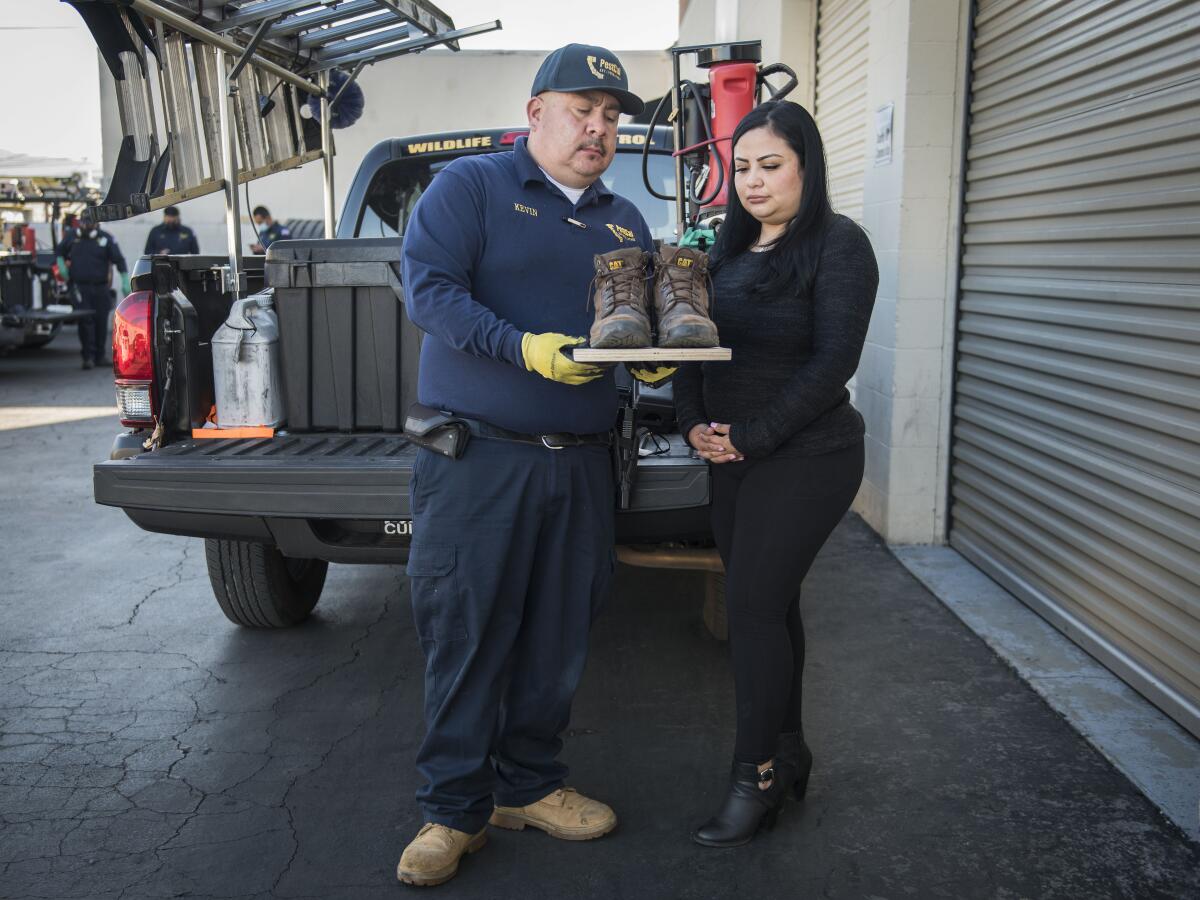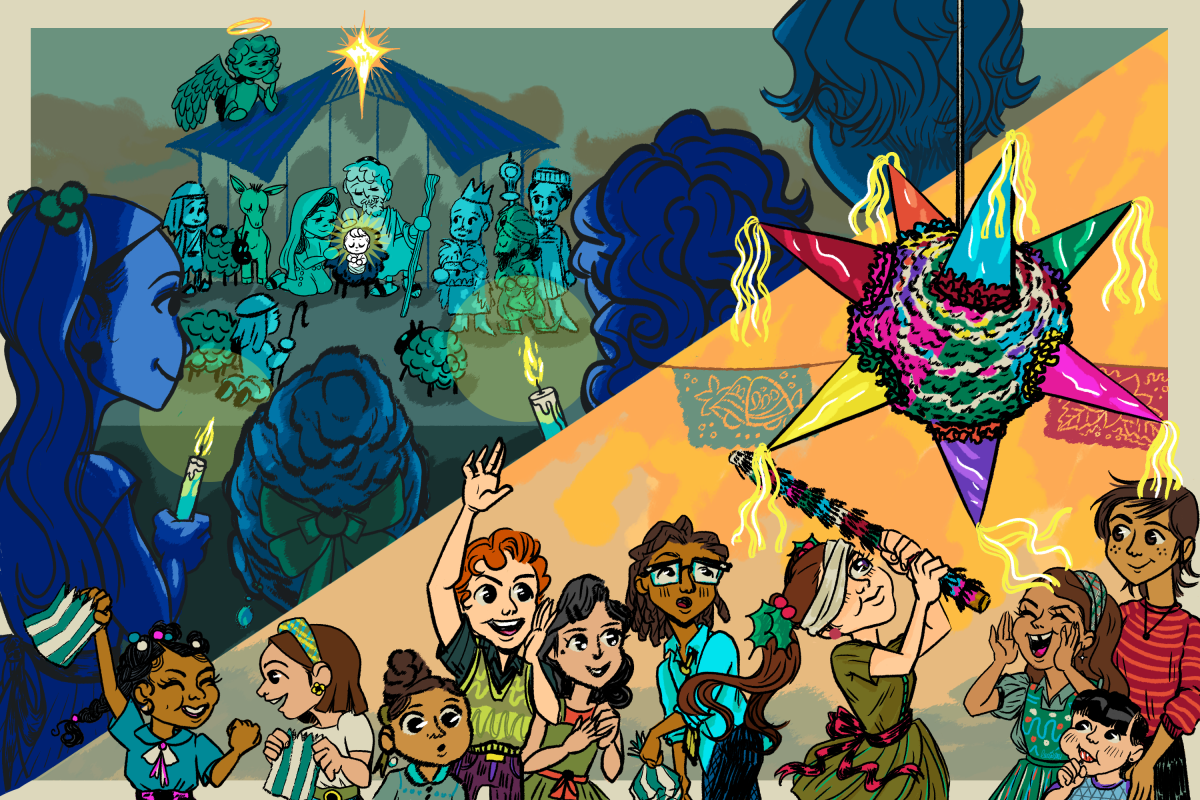Latinx Files: A Latinx toll ‘for generations to come’

- Share via
This morning, The Times published a series of articles written by my colleague Alejandra Reyes-Velarde that examine the heavy toll the COVID-19 pandemic has taken on the Latinx community.
It’s been rough.
“Latinos are getting hit from all angles,” said Christina Ramirez, professor of biostatistics at UCLA. “This is going to be felt for generations to come.”
The pandemic has been financially disastrous for people like Glenda Valenzuela and Mario Alarcon, an undocumented married couple who felt like they were on the cusp of reaching some semblance of security before the world shut down. The two worked as janitors, cleaning office buildings and schools. Alarcon’s hours were reduced, and Valenzuela lost her job completely.
Before, they dreamed of moving to a bigger place and would splurge a little by taking their kids to Chuck E. Cheese from time to time. Now, they’re just trying to stay afloat.
“We can’t give ourselves the luxury of spending money just like that,” said Alarcon. “We have to make magic with the numbers.”
The Latinx experience chronicled
Get the Latinx Files newsletter for stories that capture the multitudes within our communities.
You may occasionally receive promotional content from the Los Angeles Times.
The still-ongoing pandemic has also robbed us of life.
UCLA biostatistics researcher Jay Xu estimates that California Latinxs have lost about 370,000 years of potential life to the coronavirus as of Dec. 1. Latinxs ages 20 to 54 are dying from COVID-19 at a higher rate than their counterparts in other racial and ethnic groups.
More troubling is the fact that COVID-19 cases are spiking nationwide yet again, due mostly to the Delta variant. Who knows when all of this will be over.
“It’s infuriating, the people who don’t want to get vaccinated. It affects us, because as long as we’re not vaccinated, the pandemic won’t end,” Alarcon told The Times. “If things close again, we’ll be worse off.”
You can find the “Pandemic portraits: The Latino experience” series here.
Consider subscribing to the Los Angeles Times
Your support helps us deliver the news that matters most. Become a subscriber.
Tackling first-generation trauma
Utility team reporter Karen Garcia is working on a series of stories relating to Latinx mental health. The first was published Monday and deals with first-generation trauma, a term that has gained traction online with Latinxs and refers to the “specific experience of the children who struggle to reconcile the culture clashes between American society and their immigrant households.”
What are the signs of first-generation trauma or stress? They include parentification (”when a child is obliged to act as a parent to their own parent or sibling”), assimilation, code-switching and/or attachment trauma.
I felt this story in my bones. As the oldest child of three, I became the de facto family spokesperson when it came to navigating the system. It’s a hell of a thing to be a kid and see your grown parents be infantilized in front of your eyes because of a language barrier. And that guilt, man. Though I’m working on it with my therapist, it still weighs a ton.
I highly recommend reading the entire story, which also includes advice on steps you can take to address it. I know firsthand how isolating it can feel, and I’ve found talking about it helps.
Oh great, here we go again
The internet is a goldfish, one with such a short memory that it ends up having the same arguments over and over and over again. The latest example of this is the debate over the term “Latinx,” which has reared its ugly and tired head like clockwork yet again after another poll that found most people don’t like the term.
Normally, I avoid commenting on this discussion in this space largely because I’ve already said what I wanted to say on the subject when we first launched the newsletter, and if you’re reading this, chances are you have no problem with “Latinx.”
But I did take exception to the Miami Herald Editorial Board chiming in with this opinion piece. And by take exception to it, I mean I made fun of it. On Twitter. Repeatedly.
It was a bold move by the board to claim the authority to speak for 60 million of us scattered across the United States by pointing to tired images of Latinidad as proof of their expertise, all to defend the legacy of Miguel de Cervantes, I guess? People must really love “Don Quixote.”
To paraphrase the great Culichi poet laureate Komander, the “Latinx” discourse is nothing more than a game of “a quien le arde más,” and it’s always the same side getting mad. My advice? Get a life.
Stories we read this week that we think you should read
— Street vending is legal in Los Angeles, but you need a permit from the Department of Public Health to do it. To get that permit, you need to have a cart that meets their regulations, which didn’t exist until now. Arts columnist Carolina Miranda has this profile of Richard Gomez, an engineer from Pacoima whose sleek Tamalero cart has gotten the greenlight from health officials.
— One of the few redeeming things about the internet is the FOH Army, a loose collective of Twitter users who raise money for good causes whenever author Shea Serrano puts out the call. For Men’s Health, Spencer Dukoff spoke to Serrano and members of the FOH Army about their unconventional form of philanthropy. From the story:
“Honestly, it feels like helping out family, which is such a weird thing to say about internet friends,” Palafox Gamat says. “We’re in a weird time and place where the internet is normally just filled with doom and gloom, but pop over to Shea’s Twitter and the people and causes he helps out with directly — it just feels really good to see humanity on a smaller scale. And I like to think that if you ever need anyone, are feeling down, or counted out, the FOH Army is really just a click away.”
— From the “hate to break it to you” department: For Latina, Erica Maria Cheung wrote about the history of Mexican distilled spirits, their colonial origins, the role they played in creating a national identity, and how the industry has exploited Indigenous people and co-opted their culture for the sake of branding.
— For Column One, Times reporter Kate Linthicum went on tour with legendary band Los Ángeles Azules as they performed throughout the South, which has the country’s fastest-growing Latinx population. A special shoutout to el primo Steve Saldivar, who made an accompanying video for the story, and to Gary Coronado, whose photography focuses on one of my favorite subjects: paisas enjoying life.
— For the New Yorker, Graciela Mochkofsky wrote about Nuevayorkinos, an Instagram account and digital archive that showcases how Latinx New Yorkers see themselves. Think of it as NYC’s answer to Veteranas y Rucas.
And now for something a little different...

Lucía Elena Ventura is a Cuban Mexican animator and illustrator from the San Diego/Tijuana area. Influenced by animation and visual storytelling since her early years, Lucía uses traditional and digital media to create eye-catching characters and colorful story moments.
“For this illustration, I wanted to capture the tradition of the Posadas not only to celebrate our unique Latinx approach to the holidays but as a metaphor for the kind of restlessness or solemnity we’ve been feeling in 2021.
“The tradition of the Posada is a reenactment of Mary and Joseph seeking shelter in Bethlehem, where eventually the party guests celebrate found shelter and baby Jesus’ arrival on December 24th with a big party, and for the kids a huge piñata to strike and ring in the big day. Things have still been tough for all of us this year, and as we near closer to the end of December, it feels like there might be light at the end of the tunnel. So let’s celebrate the end the best way we know how, and hopefully, things will be bright again soon!”
Are you a Latinx artist? We want your help telling our stories. Send us your pitches for illustrations, comics, GIFs and more! Email our art director at martina.ibanezbaldor@latimes.com.
The Latinx experience chronicled
Get the Latinx Files newsletter for stories that capture the multitudes within our communities.
You may occasionally receive promotional content from the Los Angeles Times.







